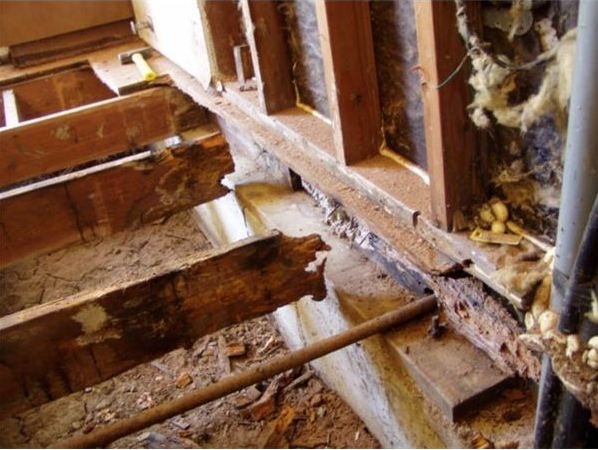Dry rot can destroy your house. Professional contractors are expensive. But if you follow these comprehensive instructions on how to repair dry rot, you can do it yourself.
Dry rot can eat your house from the inside out, weakening the structure more every day it is left untreated. These comprehensive instructions will teach you how to repair dry rot yourself, saving you a significant amount of money over hiring a contractor.
Merriam-Webster defines ‘dry rot’ as “a decay of seasoned timber caused by fungi that consume the cellulose of the wood leaving a soft skeleton which is readily reduced to powder”.
This means that it destroys the structural strength of the wood. If your house has dry rot, you should get it fixed as quickly as you can because the dry rot, as living fungi, will grow and consume more wood.

Listed below are some easy to follow comprehensive instructions on how to repair dry rot anywhere in your house that it may appear.
Read Also:
- Let the Light In with Clean Plantation Shutters: Tips to Clean Different Kinds of Plantation Shutters!
- Wood Fences vs. Vinyl Fences: Which are Cheaper and Why
- 5 Things to Look for in a Contractor for Your Home Remodel
- DIY Method: How to Clean Leather Furniture
- 4 Things You Should Know Before Buying a Steel Building
Dry rot occurs because conditions are right for the growth of the fungus. Properly treating your wood before use, with a water sealer or wood preparation product will allow you to use the wood in environments that are conducive to dry rot and other types of damage and yet the wood will stay in good condition. If you don’t have a wood sealer product, such as Thompson’s, available, a good primer product, such as Kilz properly applied, will work in a pinch.
A clean and uncluttered work area is a safe work area, so if the repair is being inside the house, everything in the area needs to be moved. This also means that if the work area is inside a wall, the drywall surrounding the damaged area will need to be removed and replaced.
The first part of this repair is to cut the damaged section out. The reciprocating saw (known as a Sawz-All) with a remodeling, or demolition blade, attached, will make short work of this. You should cut at least three inches to either side of the end of the damage.
Floor joists may need to be released from the floors that may be nailed to them. The reciprocating saw with demolition blade shines in this job. The blade will fit easily between the floor joists and the sub-floor or plywood above it.
Building codes in some area may specify more or less, but in a non-load-bearing wall, the replacement section of wood should overlap the existing wood by at least four to eight inches, on both sides. In a structural wall, that overlap should be increased to a minimum of twelve inches.
A twelve-inch overlap on both sides of the gap should be considered minimum with a structural floor repair, also. Measure the desired distance beyond the gap and mark it with a pencil. Tap one nail into the board at this location and repeat this process on the other side of the gap.
Hook the tape measure to one nail and measure to the nail and line on the far side. Remembering the carpenter’s axiom of measure twice, cut once, measure the gap in the opposite direction.
Measure the replacement section and mark off the required distance to make it the same size as the measurement you made of the damaged section. Verify the measurement and cut the wood as squarely as possible using one of the saws. The circular saw is easier for this.
Lay the board flat and drill six holes in two rows at either end of the board. These holes should one inch from either edge, two inches apart, and staggered. Attach the drill bit to the drill and secure it in the chuck. Remove the drill bit from the chuck and replace it with the screw tip.
Hold the replacement section in place with both ends near the marks you made while measuring. Hold the replacement piece securely against the existing piece and start all six of the screws on one side by hand, turning them clockwise as far as you can. Make sure the drill is set to turn clockwise and tighten all of the screws into both pieces of wood.
Repeat this process on the other side. Structural floor sections should have the floor in the area of the repair supported by a jack and blocks and a helper pushing up firmly against the underside of the floor as you attach the repair piece with the screws being drilled into the two boards with the drill and screw tip.
If the repair dry rot was completed on a section of floor joists, you will need to go through the area of the repair and nail or screw the floor to the repaired section. Sections of wall studs or ceiling joists will need to have replacement drywall installed, taped, and painted.
There’s an article on HouseSumo.com dealing with drywall replacement and repair. One inch drywall screws should be used to secure drywall to wall studs. Use extreme care while attaching drywall in areas where electrical wiring exists.